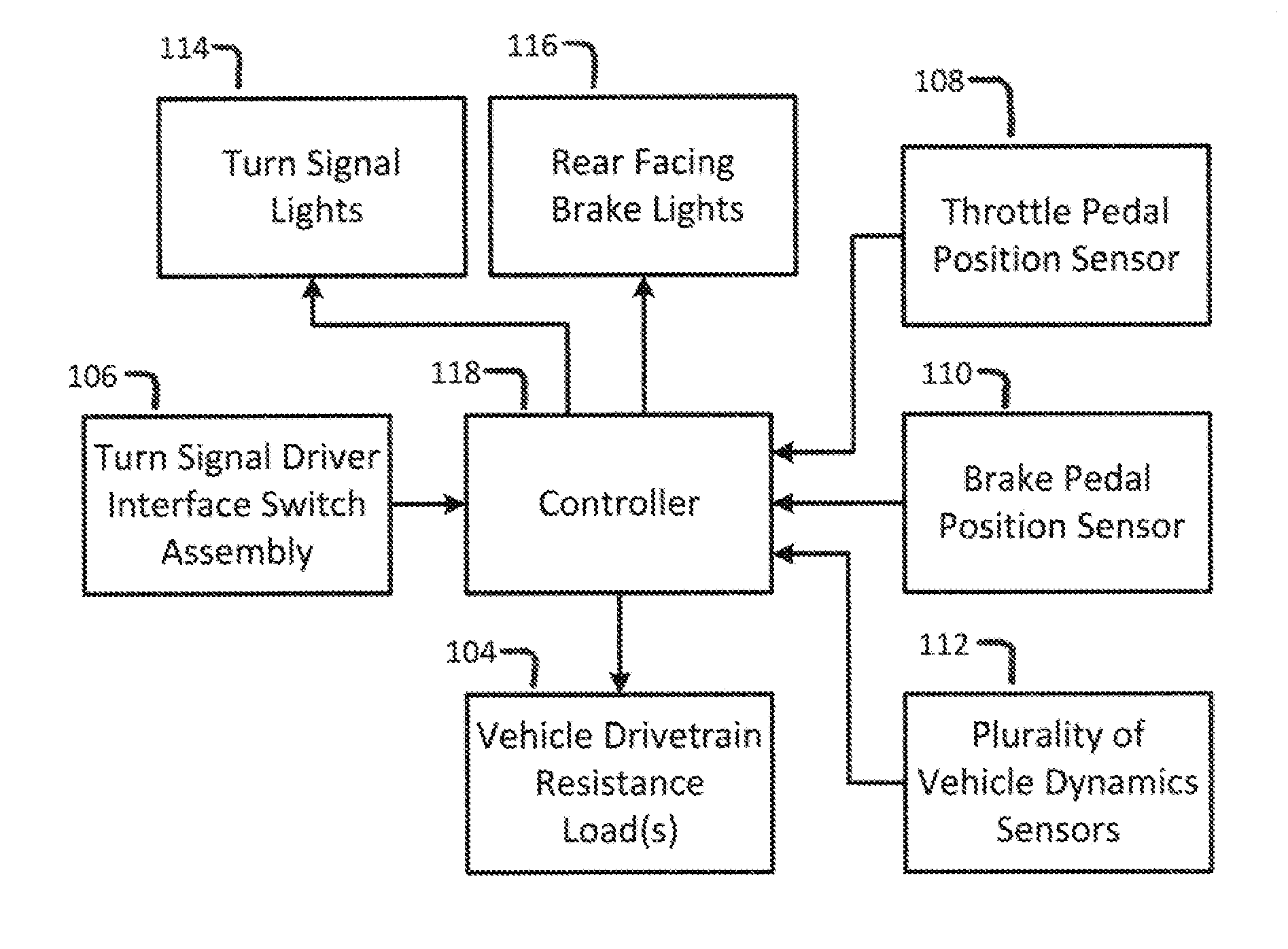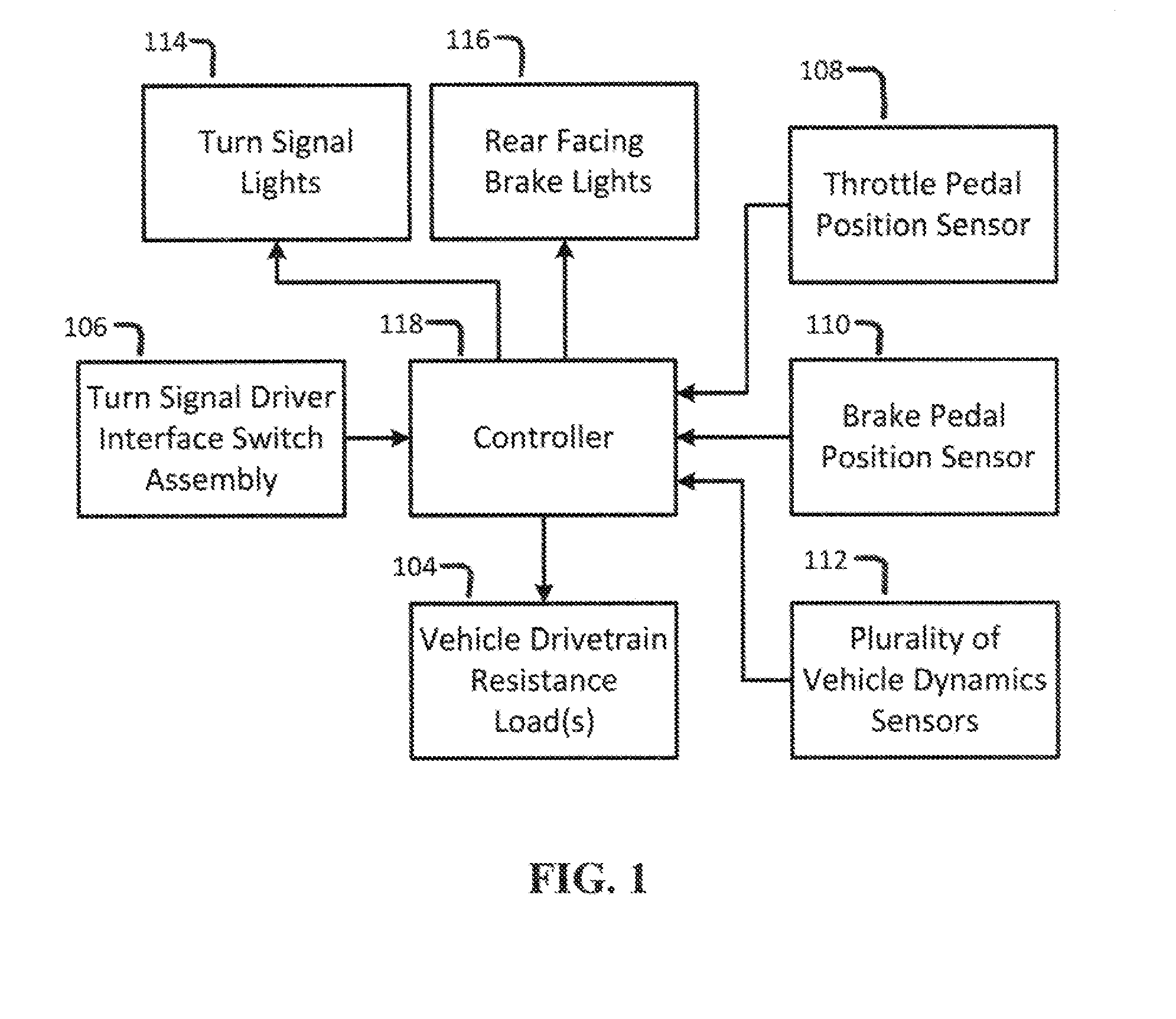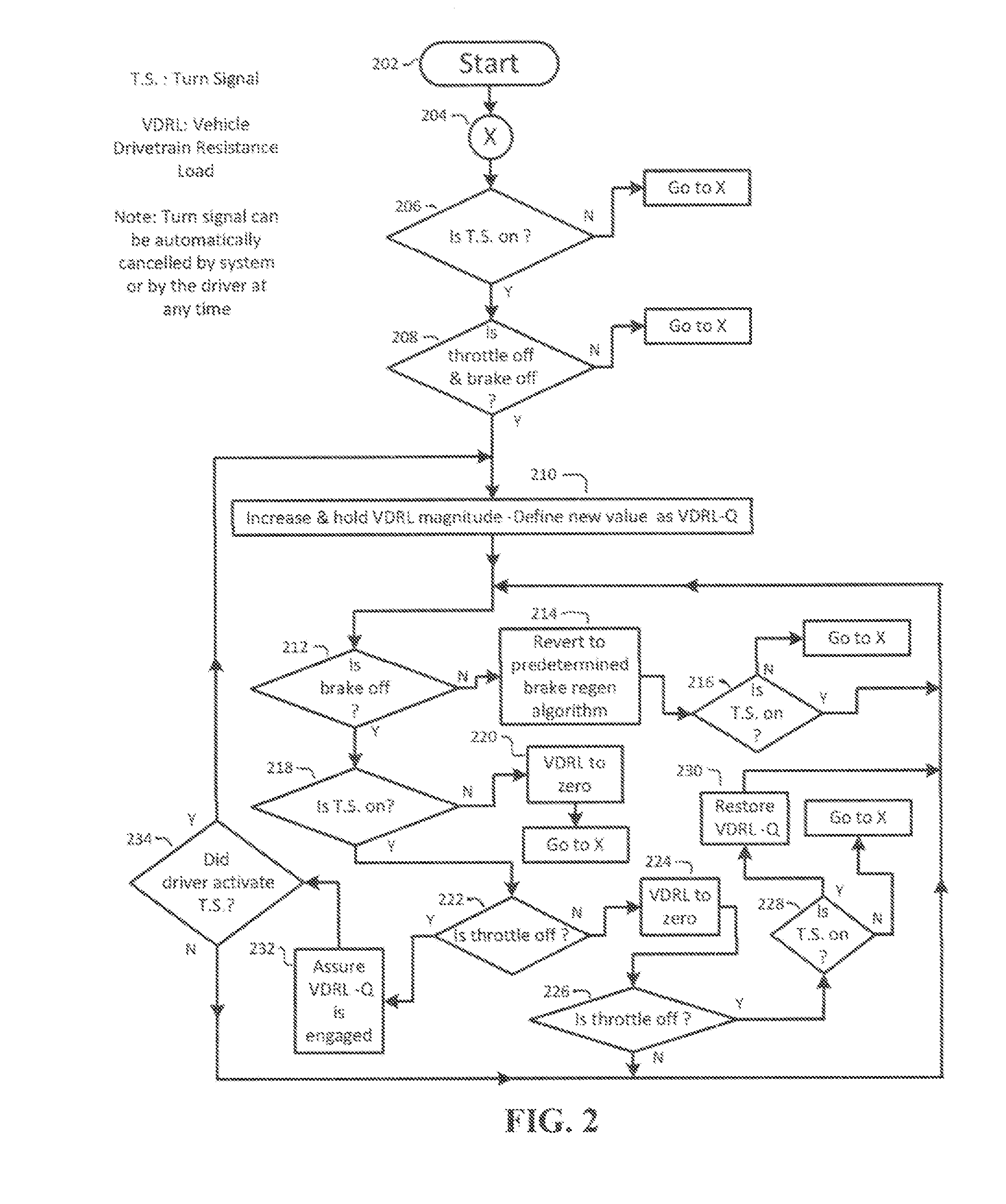Turn Signal Controlled Regenerative Braking And Decelerative Loading
a turn signal and regenerative braking technology, applied in the direction of external condition input parameters, driver input parameters, driver interactions, etc., can solve the problems of reducing the need to replace the brake system components, and the wear of the brake surface eventually, so as to reduce the use of friction braking, increase the overall propulsion efficiency of the hybrid electric vehicle, and reduce the effect of friction braking
- Summary
- Abstract
- Description
- Claims
- Application Information
AI Technical Summary
Benefits of technology
Problems solved by technology
Method used
Image
Examples
Embodiment Construction
[0027]Referring now to the drawings, a vehicle drivetrain resistance load control system is illustrated in FIG. 1. A vehicle drivetrain resistance load is represented in Block 104 and would typically consist of one or more means of adding a negative torque load to the wheels of the vehicle i.e. a torque against the forward motion of the vehicle that would tend to slow down the vehicle. A vehicle is considered any wheeled vehicle designed to be driven upon the roadway. The load would typically be applied ultimately to the drive wheels against the roadway surface and would consist of all forms of regenerative braking and / or any other decelerative load that tends to slow down the vehicle by converting forward motion kinetic energy to other forms of energy. These forms would be one or more of many sources within the vehicle, some of which may include, but not limited to the following: An engine load, a transmission load, an electrical energy generator load, a hydraulic load, a frictiona...
PUM
 Login to View More
Login to View More Abstract
Description
Claims
Application Information
 Login to View More
Login to View More - R&D
- Intellectual Property
- Life Sciences
- Materials
- Tech Scout
- Unparalleled Data Quality
- Higher Quality Content
- 60% Fewer Hallucinations
Browse by: Latest US Patents, China's latest patents, Technical Efficacy Thesaurus, Application Domain, Technology Topic, Popular Technical Reports.
© 2025 PatSnap. All rights reserved.Legal|Privacy policy|Modern Slavery Act Transparency Statement|Sitemap|About US| Contact US: help@patsnap.com



